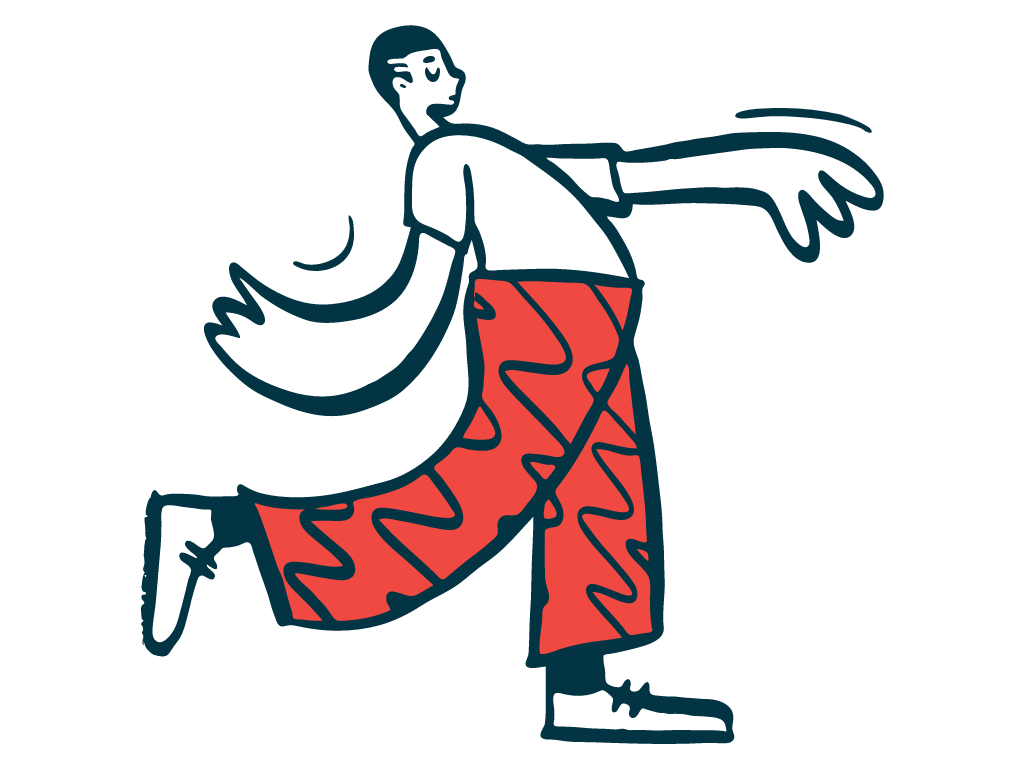Key parameters that affect walking, risk of falls in LOPD ID’d
Hip muscle strength, gait could help assess effectiveness of new therapies

The strength of hip muscles and gait wherein only one leg is in contact with the ground were identified as key parameters that affect walking and falls in people with late-onset Pompe disease (LOPD).
Both could help assess the effectiveness of new therapies and should be “priority targets for rehabilitation,” researchers wrote in “Determinants and Characterization of Locomotion in Adults with Late-Onset Pompe Disease: New Clinical Biomarkers,” which was published in the Journal of Neuromuscular Diseases.
Pompe disease occurs as a result of low to no levels of working acid alpha-glucosidase (GAA), an enzyme that breaks down a large sugar molecule called glycogen, due to mutations in the GAA gene. Without enough GAA, glycogen builds up to toxic levels, particularly in muscle cells, impairing their normal functioning. People with Pompe disease, therefore, experience muscle weakness, poor muscle tone, and have trouble breathing.
People with LOPD commonly have altered walking performance, both in a straight line or in more complex tasks, and in walking stability, often associated with frequent falls.
The mechanisms underlying impaired walking and LOPD’s characteristic waddling gait aren’t fully understood, leading researchers in France to analyze key muscle parameters, along with walking measures in adults with LOPD.
“Data relating to the criteria highlighted could guide assessments and rehabilitation and could be the focus of further longitudinal studies aiming to find sensitive-to-change clinical biomarkers,” they wrote.
Walking, balance in LOPD analyzed
The study was designed to support a clinical trial (NCT03564561) that’s tracking disease progression in adults with LOPD over two years to identify sensitive biomarkers for future studies.
The researchers analyzed 18 patients with LOPD (mean age, 58; 10 men, eight women) at the Raymond Poincaré University Hospital between November 2019 and March 2022. Twenty healthy people from the general population, matched for age, sex, weight and height, served as controls.
Walking performance, including distance walked and speed, were significantly reduced in LOPD patients compared to controls. The mean distance walked in the six-minute walk test (6MWT) was 380.3 m (about 416 yards) in the LOPD group compared with 544.1 m (595 yards) for controls. The 6MWT measures the maximum distance a person can walk over six minutes on a hard, flat surface.
LOPD patients walked 10 m at a speed of 0.87 m per second (m/s), while controls did it at 1.24 m/s. In Timed up and go (TUG), LOPD patients took significantly longer, a mean of 10 seconds versus 5.4 seconds for controls. TUG measures the time it takes to rise from a chair, walk three meters, turn around and sit on the chair again.
Tests of hip abductor muscles, those on the thigh, showed they were significantly impaired in LOPD. In fact, this was the main parameter underlying patients’ worse walking performance, impaired gait, and pelvic instability. These muscles are critical for stepping in multiple directions, walking, and balance.
The LOPD group also showed impaired knee and ankle muscles.
Ten LOPD patients reported falls in the last three months, with most (89.3%) happening while walking. The main determinant of falls was the percentage duration of the single support phase (SSP). This is the most unstable phase of walking. The percentage of SSP was significantly lower in LOPD patients than in controls (35.1% vs. 40.6%).
Overall, “hip abductor strength and percentage duration of single support during gait were the major determinants of locomotor performance, gait stability, falls and the gait pattern in LOPD,” the researchers wrote. “These new clinical biomarkers should therefore be systematically assessed using instrumented tools to improve the follow-up of adults with LOPD.”







